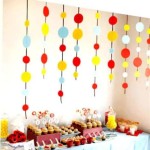Middle East Inspired Home Decor Ideas: A Journey of Rich Culture and Timeless Elegance
The allure of Middle Eastern design lies in its profound connection to history, its intricate artistry, and its emphasis on creating a comfortable, welcoming atmosphere. Drawing inspiration from diverse regions like Morocco, Persia, and the Arabian Peninsula, Middle Eastern décor offers a palette of rich colors, exquisite textures, and captivating patterns. Integrating elements of this style into a home can transform it into a sanctuary that reflects sophistication, warmth, and cultural depth.
Before embarking on this design journey, it's essential to understand the core principles that define Middle Eastern aesthetics. These principles include a focus on natural light, the use of geometric patterns and calligraphy, the incorporation of luxurious textiles, and the creation of spaces that encourage social interaction. By understanding these fundamental ideas, one can authentically capture the essence of Middle Eastern décor in a modern context.
Key Point 1: The Power of Color and Texture
Color plays a vital role in establishing the ambiance of a Middle Eastern-inspired home. Warm and inviting hues, such as deep reds, earthy oranges, rich golds, and vibrant blues, are frequently employed. These colors evoke a sense of warmth, luxury, and hospitality. The specific shades used can vary depending on the region of inspiration; for instance, Moroccan design often incorporates jewel tones, while Persian styles tend to favor more muted and refined palettes.
Texture is equally important in creating a tactile and visually interesting space. Incorporating various textiles, such as plush carpets, silk cushions, and intricately woven throws, can add depth and dimension to a room. Materials like velvet, linen, and cotton are also common choices, contributing to a comfortable and inviting atmosphere. The layering of textures creates a sense of opulence and comfort, reflecting the emphasis on hospitality in Middle Eastern culture.
Consider using rugs as a focal point. Persian rugs, with their intricate patterns and rich colors, are timeless additions to any room. Their durability and beauty make them excellent investments. Alternatively, kilim rugs, with their geometric designs and flatweave construction, offer a more casual and contemporary option. These rugs not only enhance the aesthetic appeal of the space but also contribute to the overall warmth and acoustic comfort.
Upholstery fabrics should be chosen with care, opting for materials that are both luxurious and durable. Velvet sofas and silk armchairs can create a sense of grandeur, while linen slipcovers can provide a more relaxed and understated look. Cushions and throws in a variety of textures and patterns can be layered on furniture to add visual interest and enhance the overall comfort of the space. Don't hesitate to mix and match different textures to create a unique and personalized look.
Key Point 2: Intricate Patterns and Geometric Designs
Geometric patterns are a hallmark of Middle Eastern design, reflecting the region's rich artistic heritage. These patterns, often derived from Islamic art and architecture, can be incorporated into various elements of the home, from wall décor to flooring and textiles. Common motifs include arabesques, stars, and intricate floral designs. These patterns add visual interest and a sense of sophistication to any space.
Consider using geometric tiles in bathrooms and kitchens. Zellige tiles, traditionally handcrafted in Morocco, are known for their intricate patterns and vibrant colors. These tiles can be used to create stunning backsplashes, accent walls, or even entire flooring designs. Their unique imperfections and handcrafted quality add character and authenticity to the space.
Calligraphy is another important element of Middle Eastern design. Arabic calligraphy, with its elegant and flowing script, can be used to adorn walls, furniture, and decorative objects. Incorporating calligraphy into the home adds a touch of spirituality and cultural significance. Consider framing a beautiful piece of calligraphy art or using it as a decorative motif on cushions or throws.
Stencils and wallpapers can be used to create intricate patterns on walls. Choose stencils with geometric or floral designs that reflect the Middle Eastern aesthetic. Alternatively, opt for wallpapers with subtle patterns that add texture and visual interest without overwhelming the space. Consider using metallic accents, such as gold or silver, to highlight the patterns and add a touch of luxury.
Intricate mashrabiya screens, traditionally used for privacy and ventilation, can also be incorporated into modern homes as decorative elements. These screens, often made of wood or metal, feature intricate geometric patterns that allow light and air to filter through while providing a sense of seclusion. They can be used as room dividers, window treatments, or even as decorative wall panels.
Key Point 3: Embracing Natural Light and Open Spaces
Natural light is highly valued in Middle Eastern design. Homes are often designed to maximize sunlight exposure, with large windows and open floor plans that allow light to flow freely through the space. This emphasis on natural light contributes to a bright and airy atmosphere, creating a sense of well-being and connection to the outdoors.
Consider using sheer curtains or blinds to filter sunlight and provide privacy. These window treatments allow natural light to enter the room while softening its intensity. Choose lightweight fabrics that allow light to pass through easily, creating a warm and inviting ambiance. Avoid heavy drapes that block out too much light and make the space feel dark and cramped.
Mirrors can be strategically placed to reflect light and create the illusion of more space. Large mirrors can be used to amplify natural light and make a room feel larger and brighter. Consider placing mirrors opposite windows to reflect the outdoor view and bring the outdoors in. Mirrors with ornate frames can also add a touch of elegance and sophistication to the space.
Open floor plans are common in modern Middle Eastern-inspired homes, encouraging social interaction and creating a sense of spaciousness. If possible, consider removing walls to create a more open and flowing layout. This will allow natural light to penetrate deeper into the interior and create a more inviting and welcoming atmosphere.
Courtyards and outdoor spaces are integral to Middle Eastern design. If you have access to a courtyard or patio, consider transforming it into an outdoor oasis with comfortable seating, lush plants, and water features. Outdoor spaces provide a connection to nature and offer a tranquil retreat from the hustle and bustle of daily life. Embrace the tradition of gathering outdoors to socialize and enjoy the fresh air.
Lighting fixtures play a critical role in setting the mood. Ornate lanterns, pendant lights, and sconces can add a touch of Middle Eastern flair while providing functional illumination. Consider using warm-toned light bulbs to create a cozy and inviting atmosphere. Chandeliers with intricate designs and shimmering crystals can also add a touch of luxury and glamour to the space.
Furniture should be chosen with comfort and functionality in mind. Low seating arrangements, such as floor cushions and comfortable sofas, are common in Middle Eastern homes, encouraging relaxation and social interaction. Choose furniture with plush upholstery and supportive cushions to create a comfortable and inviting space. Consider incorporating coffee tables and side tables with intricate carvings and inlaid details to add a touch of authenticity.
Accessories can add the finishing touches to a Middle Eastern-inspired home. Decorative objects such as pottery, metalwork, and handcrafted textiles can bring the space to life and reflect the region's rich cultural heritage. Consider displaying these objects on shelves, mantels, and coffee tables to add visual interest and personality to the space.
Plants can also play an important role in creating a welcoming and inviting atmosphere. Incorporate potted plants, such as ferns, palms, and succulents, to add a touch of greenery and bring the outdoors in. Plants not only enhance the aesthetic appeal of the space but also improve air quality and create a sense of peace and tranquility.
Ultimately, incorporating Middle Eastern-inspired design elements into a home is a journey of personal expression. By carefully selecting colors, textures, patterns, and accessories, a space can be transformed into a sanctuary that reflects sophistication, warmth, and cultural depth.

Middle Eastern Interior Design Trends And Home Decorating Ideas Asian Decor

Middle Eastern Interior Design Trends And Home Decorating Ideas Asian Decor

Middle Eastern Diy Home Décor Ideas

Middle Eastern Diy Home Décor Ideas

Pin On Jet Setters

Pin On Dream Home Ideas

Middle Eastern Diy Home Décor Ideas Элегантный декор дома Интерьер в азиатском стиле Декор спальни

Middle Eastern Diy Home Décor Ideas

Moroccan Patios Courtyards Ideas Photos Decor And Inspirations

Moroccan Living Rooms Ideas Photos Decor And Inspirations
Related Posts







